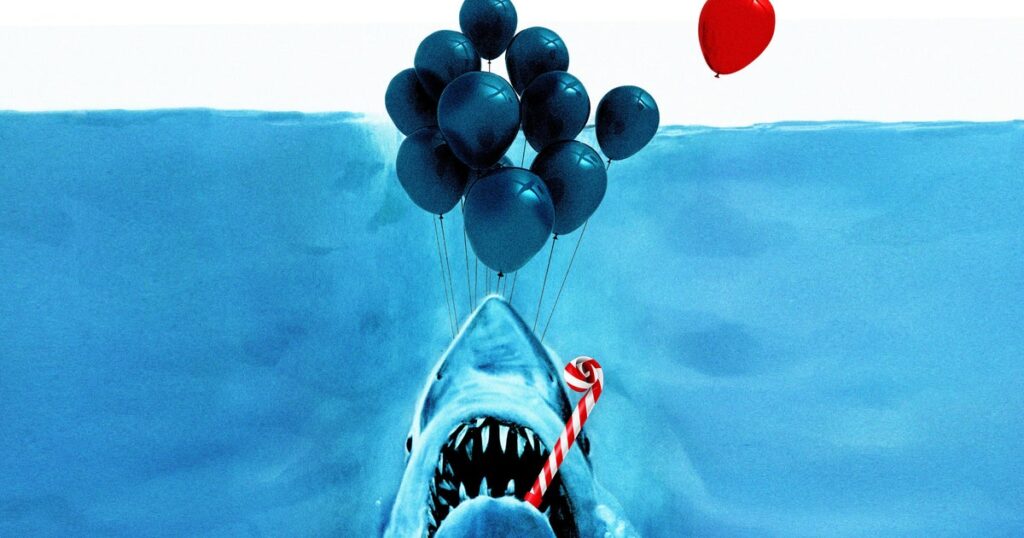
Last summer, a great white shark washed up on the shores of Nantucket, Massachusetts, presenting a rare and dramatic scene. A family on vacation stumbled upon the stranded creature and, rather than retreating in fear, they bravely pushed it back into the ocean. The video of their daring rescue quickly went viral, offering a heartwarming narrative that contrasted sharply with the fear that might have dominated such an encounter 50 years ago.
On June 20, 1975, Steven Spielberg’s “Jaws” premiered, forever altering the public’s perception of sharks and setting the stage for the modern blockbuster era. The film, based on Peter Benchley’s best-selling novel, was the first to gross over $100 million at the U.S. box office, according to the American Film Institute. It ignited a fascination with sharks that led to increased scientific interest but also sparked a surge in shark hunting.
The Impact of ‘Jaws’ on Pop Culture and Conservation
Wendy Benchley, ocean conservationist and wife of the “Jaws” author, recalls the immediate aftermath of the film’s release. “When ‘Jaws’ came out, there was an uptick in shark tournaments,” she noted. “This fictional book and movie somehow gave people the license to kill sharks.” The portrayal of sharks as monstrous predators led to a spike in shark hunting, with many inspired by the character Quint, played by Robert Shaw.
However, the film also inspired a new generation of marine scientists. Richard Dreyfuss’s character, Matt Hooper, became a role model, leading to increased enrollments in marine biology programs. The Rosenstiel School of Marine Science at the University of Miami reported a 30% increase in enrollment following the film’s release.
Shark Populations: A Decline and a Call for Conservation
Despite the initial wave of shark hunting, the global shark population has seen a dramatic decline. A 2021 report in the journal Nature highlighted a 71% decrease in sharks and rays since 1970, primarily due to overfishing. Wendy Benchley emphasizes the urgency of the situation: “We only have 10% of the sharks left that we had in the ocean 40 years ago.”
“You’ve got to have apex predators in the ocean to keep the ecosystem in balance.” – Wendy Benchley
Efforts to curb the demand for shark fin soup, particularly in China, have been somewhat successful. WildAid’s campaigns, featuring celebrities like Yao Ming and Jackie Chan, have reportedly reduced demand by 85%.
Are Shark Attacks Increasing?
Globally, shark attacks are not on the rise, with 47 recorded unprovoked bites in 2024, down from the average of 64 in previous years, according to the International Shark Attack File. However, the East Coast of the United States has seen an increase in sightings and bites, largely due to the resurgence of seal populations, a primary food source for great whites.
Climate change may also play a role, as warming oceans could attract different marine life, drawing sharks closer to shore. A 2024 study found that younger great whites are more inclined to inhabit warm, shallow waters.
“Sharks do not like humans. We don’t have enough fat on us. They’d much rather have a seal.” – Wendy Benchley
The Complex Legacy of ‘Jaws’
As we reflect on the 50th anniversary of “Jaws,” its legacy is undeniably complex. While the film initially fueled fear and led to the decimation of shark populations, it also inspired scientific curiosity and conservation efforts. Wendy Benchley finds solace in the changing attitudes towards sharks, as demonstrated by the Nantucket family’s rescue of a beached shark.
“Thank heavens,” she remarked. “People finally understand how vital sharks are.”
In the wake of “Jaws,” the narrative around sharks has evolved from one of fear to a more nuanced understanding of their ecological importance. As we continue to study and protect these apex predators, the lessons from “Jaws” remind us of the power of storytelling and its ability to shape public perception and policy.






